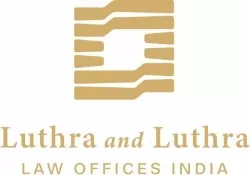- within Finance and Banking topic(s)
- within Finance and Banking, Insolvency/Bankruptcy/Re-Structuring and Insurance topic(s)
- in Australia
- with readers working within the Banking & Credit, Insurance and Law Firm industries
- Introduction
A wind farm in rural Rajasthan, a solar powered cold storage unit in rural Bihar, and a women-led microenterprise in Odisha are all bold ideas but struggle to get funded. This is primarily because traditional investors seek returns while shunning risks, public finances are already stretched, government funds have competing priorities, and development aid alone is seldom sufficient.
In this milieu of impactful social ideas and the associated funding gap, blended finance steps in quietly but powerfully, to bridge the gap. The strategic use of catalytic and concessional capital to crowd-in commercial investment makes high-impact projects not only possible, but sustainable. In this article, we study how blended finance is changing the development playbook in India by reducing the cost of capital for socially impactful investments.
- Understanding Blended Finance
Blended concessional finance, or blended finance, combines concessional finance from donors or third parties alongside a development finance institution's normal own account finance and/or commercial finance from other investors, to develop private sector markets, and address the Sustainable Development Goals, and mobilize private resources.1
Imagine a renewable energy developer, XYZ Limited (the "Company") wants to build a 100 MW solar power plant in rural Maharashtra ("Project"). The Project is environmentally sound and socially impactful, but private investors view it as too risky due to uncertainty of cash flows, regulatory hurdles, long gestation period etc. The Company needs INR 300 Cr. for the Project. However, private investors are unwilling to fund the entire project due to the associated risks.
In such a situation, a development agency agrees to provide INR 50 Cr. in first loss guarantee (which means that the development agency will absorb the INR 50 Cr losses in case the Project fails), grant of INR 20 Cr. split as INR 15 Cr. of working capital loan and INR 5 Cr. as technical assistance for capacity building, training engineers, etc. This de-risks the investment, reduces the cost of capital and makes the Project more attractive for the private investors. Since, the downside risk has been partially covered and the concessional terms are likely to improve the returns, a consortium of commercial banks and an infrastructure debt fund step in to provide INR 130 Cr. as a loan and INR 100 Cr. in equity investments, respectively.
This is how blended finance steps in to turn what seemed financially impossible into a feasible project, unlocking both capital and opportunity.
- Foundational Pillars of blended finance
The essence of blended finance lies in achieving the most optimal mix of concessional finance instruments such that it encourages crowding-in of commercial capital. Some of the common instruments2 used for concessional finance are:
- Grants: non-repayable funds provided by multilateral institutions, Government or philanthropic entities.
- Loans: low interest or syndicate loans offered at below market rates and relatively favourable terms.
- Guarantees/ Insurance: financial instruments that cover a portion of the debt in case of default, and a wide range of risks, including natural hazards, project risks, credit default or political risks.
These are then blended with commercial finance in the form of equity and debt instruments.
By layering concessional as well as commercial funds, whether through concessional capital, credit guarantees/risk insurance, technical assistance or design-based grants, these structures reduce the perceived risks and enhance the bankability of a project making it more investable. Some of the commonly used blended finance structures include3:
- Concessional Capital: when a public or philanthropic investor funds a project while accepting lower returns in exchange for development impact. Generally, concessional capital takes subordinate position and absorbs the first loss if the project fails and that gives a risk cushion to private investors who invest in senior debt with the assurance that their investment is partially protected.
- Credit Guarantees/ Risk Insurance: when the public or philanthropic investor offers credit enhancements through below the market rate guarantee/ risk insurance.
- Technical assistance/ design-based grants: non-repayable funds used to support the operational phase of a project in the form of capacity building, training of engineers or staff of the project, etc.
- Result-based financing: the incentives are based on achievement of the desired outcomes. For example, social/development impact bonds, outcome-based loans, etc.
- Regulatory Landscape Governing Blended Finance in India
Primarily, the regulatory framework of a blended finance project depends on the factors such as the source of capital and the financial instruments used.
- Domestic Capital Sources
If the source of commercial or concessional capital is domestic, for instance through corporate social responsibility (CSR) contributions, public financial institutions, or domestic philanthropies, then the applicable regulations include:
- Companies Act, 2013 and the Companies (CSR) Rules, 2014, for structuring and deploying the CSR funds.
- Income Tax Act, 1961, for tax treatment of the instruments used in the structure.
- SEBI (Alternative Investment Fund) Regulations, 2012, where concessional finance is routed through Alternate Investment Funds ("AIF"), especially for impact-focused funds.
- Foreign Capital Sources
If the source of commercial or concessional capital is international, such as bilateral or multilateral agencies, foreign governments, or foreign philanthropic foundations, the applicability of laws is dependent on the nature of the instrument such as grant, equity, or debt:
- under the Foreign Contribution (Regulation) Act, 2010, grants or donations must comply with stringent prior approval process;
- equity investments must comply with Foreign Direct Investment Policy and sectoral caps, as notified under the Foreign Exchange Management Act, 1999; and
- debt instruments, including concessional loans, must be compliant with the External Commercial Borrowings Framework, as well as broader FEMA regulations.
- Recent Regulatory Developments Supporting Blended Finance
Additionally, the recent policy developments are actively shaping a more enabling environment for blended finance transactions. Two recent notable regulatory developments are:
- SEBI AIF (Alternate Investment Fund) Regulations
The recent amendments allow blended capital structures within a single AIF vehicle. Now, the concessional investors such as multilateral agencies, government entities, and sovereign funds are permitted to accept lower financial returns and absorb higher losses than their pro-rata entitlement which has encouraged the use of risk layering as a structuring tool.
This is relevant in impact-focused AIFs, where development finance institutions and philanthropic actors often play a catalytic role by taking subordinate positions in the risk-reward waterfall thereby encouraging crowding-in of commercial capital.
- Reserve Bank of India (Co-Lending Arrangements) Directions, 2025
The Reserve Bank of India (Co-Lending Arrangements) Directions, 2025 ("RBI Directions") enable blended finance by encouraging cooperation between regulated lenders such as commercial banks and NBFCs. Key features include:
- allowing the lenders to offer default loss guarantee up to the limit of 5% of the outstanding loan amount under the co-lending or credit sourcing arrangement; and
- extending blended interest rates to the borrower. These rates are determined on the basis of the interest rates charged by the participants of the co-lending arrangements taking it into account the lending policies of each lender and ensuring a return proportionate to their participation.
Together, these changes will foster a regulatory ecosystem that will make previously high-risk developmental investments more viable for participation by the private capital on commercial terms.
- A recent use case of blended finance
Rewa's solar power plant in the Indian state of Madhya Pradesh is one of the largest solar power projects that used the blended finance mechanism to de-risk investment and attract commercial capital by strategically using concessional capital.
To improve bankability and make the project more attractive to the lenders, the Clean Technology Fund ("CTF") through the World Bank provided concessional finance for the project. Such concessional capital reduced the overall cost of the project and improved potential returns. Alongside, commercial debt was raised from Indian banks. The blended structure strategically combined concessional and commercial capital, with risk-sharing mechanisms like guarantees and payment security frameworks, including a three-tier payment security mechanism involving Solar Energy Corporation of India Limited ("SECI"), guarantee from the state of Madhya Pradesh, and a line of credit from the World Bank.
This combination of concessional as well as commercial finance was used to enhance the confidence of the private investors to invest in the large-scale renewable energy project.
- Future potential of blended finance in India
As India marches towards its commitment to attaining sustainable development goals, the public funds alone will not suffice to finance the realization of competing goals such as decarbonising the energy sector, building resilient infrastructure, and uplifting underserved communities.
In a capital deficient country like India, blended finance can be useful for reducing the funding gap and creating opportunities by securing an optimal combination of public, philanthropic, and private capital through well-considered, risk-aligned structures.
Concessional capital can play a catalytic role in turning the reluctant private capital into confident investment. The recent changes introduced in the SEBI AIF Regulations, and the RBI Directions, mark a significant step towards creating an enabling regulatory landscape for blended financing. The regulatory changes send a strong signal regarding the country's commitment to adopting innovative financial structures to reduce the investment risk and achieve high-impact objectives.
Footnotes
1 International Finance Corporation, Blended Finance for Climate Investments in India (IFC 2023) https://www.ifc.org/blendedfinance accessed on 11 July 2025.
2 OECD, Evaluating Blended Finance Instruments and Mechanisms: Approaches and Methods (OECD 2021) https://www.oecd.org/dac/evaluating-blended-finance accessed on 14 July 2025.
3 Convergence, Blended Finance (Convergence, 2024) https://www.convergence.finance/blended-finance accessed 14 July 2025.
The content of this article is intended to provide a general guide to the subject matter. Specialist advice should be sought about your specific circumstances.



